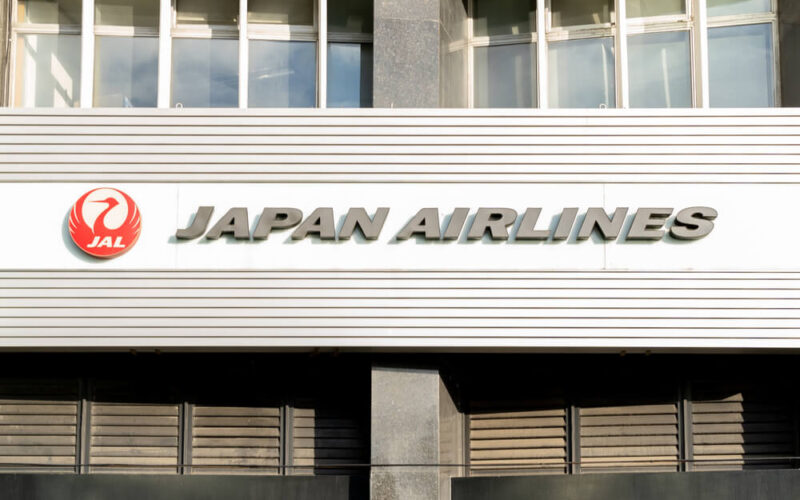The troubled South East Asian carrier, Malaysia Airlines, might be getting a savior to help its dire financial situation. Japan Airlines is seemingly rising to the occasion and eyeing a stake in the airline. The Malaysian government is looking for options to off-load Malaysia Airlines, as it is failing to post a profit since February 2016. Back then, the Chief Executive Officer of the company, Christoph Mueller, said that the target is “to break even by 2018”, a target which has been missed by a mile. But is there hope for the airline to turn around its operations?
While Malaysia Airlines’ financial statements are rather uninformative and do not directly disclose the profit or loss numbers, the company has stated that it posted “lower losses than the year before” when it reported its FY2018 results, falling short of the turnaround plan. Launched by Khazanah Nasional Berhad, the sole stakeholder of the company, the 12-point plan had one goal in mind – Malaysia Airlines was to return to profitability in 2017, ensuring long-term financial stability at the carrier.
As the airline kept losing money, the Malaysian government, which owns Khazanah Nasional Berhad and subsequently, the airline, got fed up. In March 2019, Malaysia’s Prime Minister said that Malaysia Airlines “could be sold, shut or refinanced by the government”. Rumors were circulating of several potential buyers, including AirAsia and even Qatar Airways, after the latter Group’s CEO met with the Malaysian Prime Minister and several other Malaysian officials to “discuss key industry issues”, according to a press release issued by Qatar Airways.
And now, Japan Airlines is the latest name popping up in the potential buyers’ list, according to reports. The two airlines have “signed memorandum of understanding to pursue a joint business agreement” on May 27, 2019 – the agreement is not exclusive to codesharing, as the press release has indicated that Japan Airlines and Malaysia Airlines are looking to “cooperate in a wider scope” and to exchange “best practices”, including developing tourism in Japan and Malaysia.
Throwing money at a problem
While a new stakeholder would improve the financial situation at the airline, the classic resolution of “throw money at it until it works” is not an optional solution to turn around the airline. Currently, Malaysia Airlines is the last dinosaur left in the region without a low-cost subsidiary. While flag carriers of neighboring countries, like Garuda Indonesia or Philippine Airlines, have established low-cost carriers to combat the likes of AirAsia long-ago, Malaysia Airlines is yet to do so. The Malaysia Airline System (MAS) has two subsidiaries, namely Firefly and MASwings, that are both operating as regional airlines with exclusive fleets of ATR-42 or ATR-72 turboprops.
The decision not to establish a no-frills airline under the MAS umbrella shows – the group has lost 12% of total capacity in the Malaysian market and as of 2018, accounted for 21% of total capacity in the country. Meanwhile, AirAsia controls 50%, while Lion Air’s Malaysian subsidiary, Malindo, has managed to move up the ranks since its establishment in 2012 and now controls 9% of the market in one of the biggest South East Asian economies.
Instead, Khazanah decided to invest $1.5 billion (RM6.0 billion) to restructure the organization, including axing 6,000 jobs, moving the headquarters of MAS to Kuala Lumpur International Airport (KUL), leadership changes and so on. Yet the 12-point plan missed a fundamental threat right in front of their eyes, as MAS kept losing market share to low-cost carriers. Even the big sharks of the low-cost business did not steer the boat in the right direction – Peter Bellew, a longtime executive at Ryanair, had a short tenure at Malaysia Airlines spanning from 2015 to 2017, where he held positions of Chief Operations Officer (COO) and Chief Executive Officer (CEO).
However, Bellew started laying the foundations of significantly reducing costs and, maybe, moving to a low-cost model on at least some flights – during his reign at the helm of the airline, Boeing, together with Malaysia Airlines, announced an order of 50 (25 firm, 25 options) Boeing 737 MAX aircraft. While now the MAX carries a much different reputation, back then it was only known for its MAX efficiency, bringing significantly reduced operational costs compared to any other narrow-body aircraft. In addition to ordering one of the most efficient aircraft, the deal was brokered with an impressive discount – 40% compared to an older order for 737NG, which the airline placed in 2008.
After the second 737 MAX crashed in Ethiopia and the type was grounded worldwide, the airline was having second thoughts about the order, according to The Edge. Boeing was supposed to start deliveries to Malaysia Airlines in 2020, yet the grounding most certainly has put a delay on that timeline, as the manufacturer will face a one-of-a-kind logistical challenge to deliver the massive amount of jets sitting in parking lots all throughout Boeing’s facilities in the United States.
Question remains how much patience the Malaysian government still has with its ailing flag carrier, as it keeps bleeding money – reportedly, the sovereign wealth fund that controls Malaysia Airlines is looking to finalize a deal by the end of the year.
Another question is the direction Malaysia Airlines will turn if a deal will be finalized – with a lot of strategic opportunities and the backing of the local government or new faces at the executive table, there is still a glimmer of hope for the Malaysian flag carrier.

